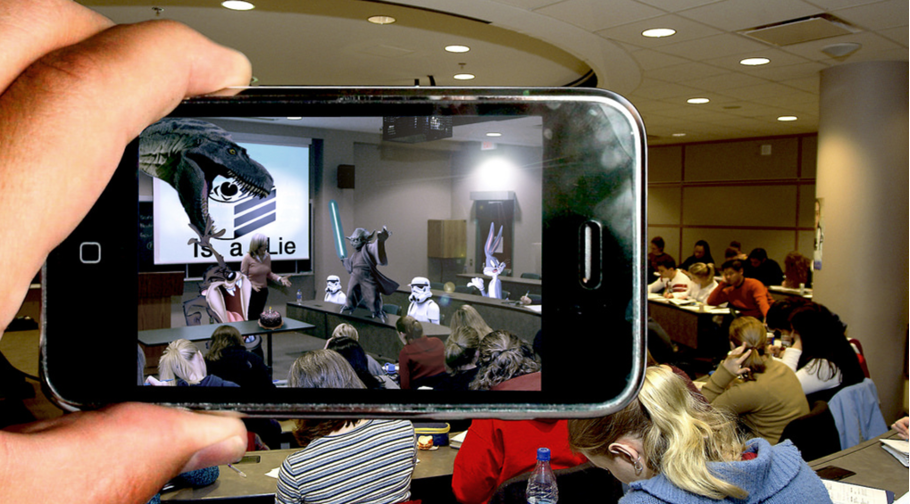Artificial Intelligence Case Study
European Institute for Innovation – Technology, Germany
Virtual Reality (VR)/Augmented Reality (AR) in Education
Augmented reality (AR) technologies can help turn an ordinary class into an engaging, effective, and more accessible learning experience. AR allows for interactive, virtual examples (often with fun gaming elements) to support other learning materials, which in turn helps learners better grasp certain concepts – especially in relation to ‘real-world’ learning examples as those offered in vocational education and training centres.
Copyright: Vertex VR
Augmented Reality (AR) applications allow for enhanced teaching of practical learners in a vocational discipline with technological specialties. AR has the potential to vastly increase the motivation for learning and the independence of learners in the teaching process. The authors of the case study found that in conducting research in the use of AR through practical application development, using specific software that many benefits are created for the learner. The Augmented Reality content consisted of 3D-models, images and animations, which are superimposed on real objects, helping learners to study specific tasks in a virtual practical manner. The learner who has a smartphone, a tablet PC, or Augmented Reality glasses can visualise on-screen virtual objects added to a real environment. Having analysed the current situation in VET, the learner’s interest in studying, their satisfaction with the educational process, and the impact of the Augmented Reality application on learners were increased.
Particularly interesting to VET is the use of AR in manufacturing skills development. With AR, manufacturing can train their practical applications of theory in a time and cost-efficient way. Smart phone, tables or AR headsets can provide step-by-step instructions while a learner is practicing. The manufacturing company, AGCO, has implemented Glass, which is a hands-free device that utilises smart glasses and AR for increasing efficiency of inspection, production and training, and is especially helpful to new hires.
The case study research reported that AR in educational settings led to better learning performance and promoting learning motivation, which was because AR supplies the authenticity graphical content and interactivity required by a practical learner. Also, deeper learner engagement improved enjoyment and positive views of AR, this is particularly useful in engaging learners in VET settings. Besides the use of AR for practical learning through ‘hands-on’ or stimulating visual experiences, AR can be used for accessibility purposes, as AR apps are relatively affordable and allow for training in various settings at an individualised pace and more importantly place.
AR can improve learner engagement and thus performance and can be used in various vocational fields to allow learners to gain hands-on practice in a safe training environment, allowing for more training opportunities. However, AR should be used in conjunction with tangible, practical training in VET, as AR alone does not replace such training, especially were competency is to be measured.
